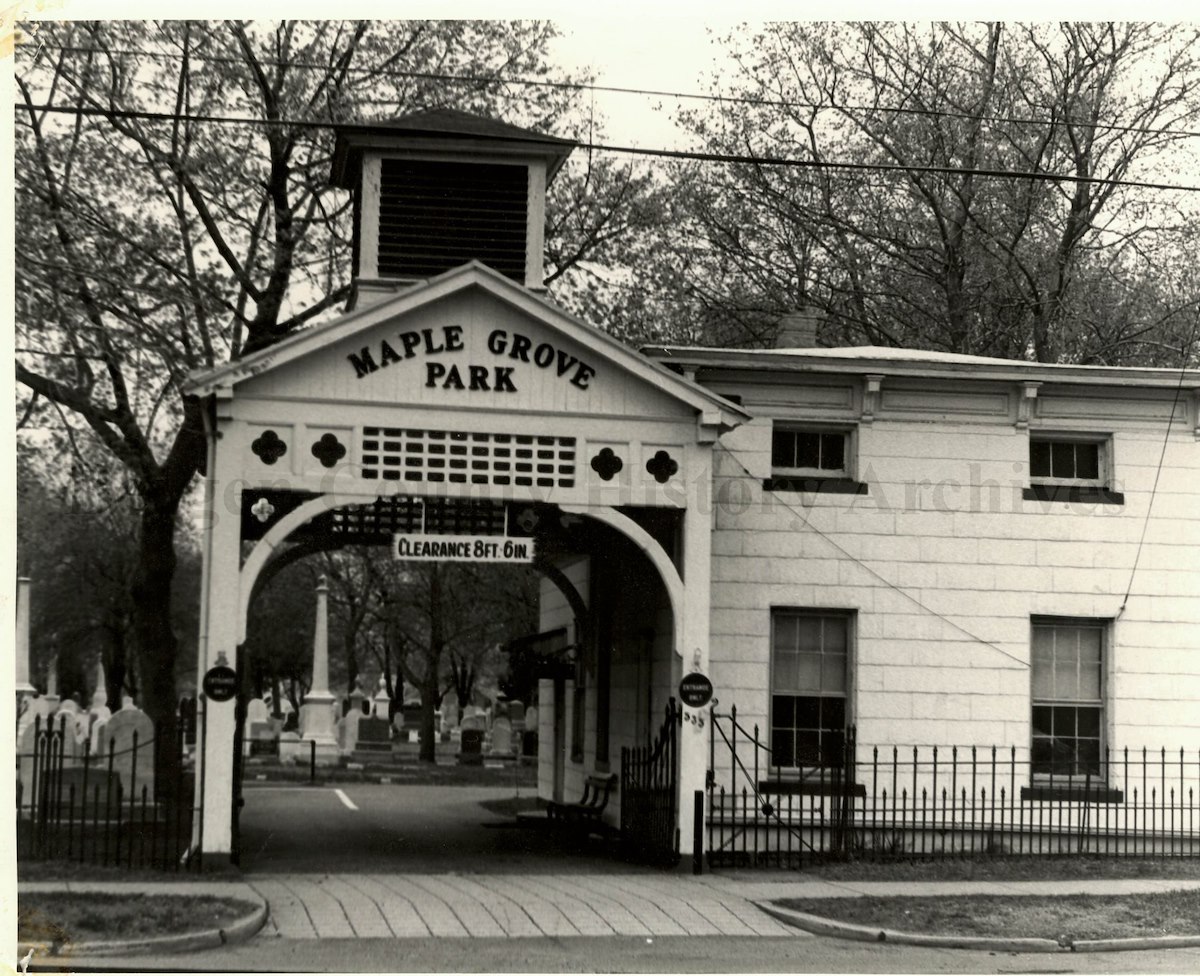Emma May Lee (1878-1962): Biracial Identity and Bureaucratic Legibility

Fig. 1. Szewczyk, Stanley, Maple Grove Cemetery, Hackensack/Little Ferry, Bergen County Clerk’s Office, n.d.
Emma May Lee was born in Sydney, Australia in April 1878, to parents Lee Fee and Elizabeth Reynolds (“New York, New York City Marriage Records, 1829-1938”). Though records of Lee Fee’s early life are incomplete, he may have arrived in Australia from China during the gold rushes of the mid- to late 1800s. The relative proximity of China to Australia made such journeys common during that era, leading to a boom in Australia’s Chinese population. Reynolds’ history is equally tricky to piece together. Though she is described as German in Edith Eaton’s (aka Siu Sin Far’s) 1890s Chinatown journalism, Emma consistently reported her mother as English in records. Such discrepancies may be attributable either to mistaken family history, or to growing tensions between the United States and Germany in the early 20th century. It is likewise unclear if Lee and Reynolds ever married, though it is unlikely given the legal status of interracial marriage in both America and Australia during this period.
In 1892, at the age of 14, Emma immigrated to New York and settled on Mott Street in Manhattan, where she lived with her father (“United States, Census, 1900”). The United States’ Chinese Exclusion Act had at that point been in effect for around ten years, so Lee may have immigrated to New York in an earlier era and sent for Emma at a later date. In 1894, Emma married Henry Lem (or Lim), a merchant from Hock Shan, China who was 20 years her senior (“New York, New York City Marriage Records, 1829-1938”). Edith Eaton’s journalism speaks apocryphally of Lee Fee’s daughters, one of whom married a white man, the other a Chinese man; it may be that she heard about Emma’s marriage through Lee Fee or other contacts. Eaton treats the story as a thought exercise, imagining that Emma might move to China with her husband, and “become” Chinese, while the other sister might lean into passing as white in the United States. However, Emma’s life played out quite differently than in Eaton’s imagination.
As the biracial daughter of a Chinese father and a white mother, Emma’s racial category became a point of contention and practical difficulty; she is listed as white in all records before 1920, other than her marriage certificate. The 1900 marriage certificate and census records from 1920 onwards give her race as “Asian” or Chinese. While it might be tempting to narrativize this as a product of evolving personal identification, it seems more likely that her documented race in various pieces of paperwork is attributable to the pragmatic concerns about her legal status and freedom of movement. Being read or listed as white likely made it possible for Emma to immigrate to the States during the exclusion period, but it could have made her marriage to a Chinese man contentious. Though New York did not legally bar interracial marriage when Emma married in 1894, listing herself as Chinese likely smoothed the process.
Emma and Henry Lem lived in Manhattan for over 25 years, before moving in 1920 to Cliffside Park in Bergen, New Jersey (“Henry Lem (1858-1949)”). They had seven children, five daughters and two sons: Lenhoe “Elizabeth” May (b. 1895), Eva Rose “Rosie” (b. 1900), Ida/Ivy (b. 1903), Emma (b. 1904), Henry (b. 1906), Henrietta (1909), and Harvard “Harvey” (1915) (“United States, Census, 1900”; “United States, Census, 1910”; “United States, Census, 1920”). They lived fairly comfortably – Henry worked first as a merchant, then owned a butcher shop – but their family life was not free from tragedy. Their youngest daughter, Henrietta, passed away at the age of three, and Emma the younger, who survived to adulthood, nonetheless died young from tuberculosis at the age of 24 (“New York, New York City Municipal Deaths, 1795-1949”). Her death had a profound effect on the family, particularly on Henry; when he passed away in 1948, 20 years later, he was laid to rest in the same plot in Maple Grove Park Cemetery in Hackensack, New Jersey. Emma herself died 14 years later, in 1962 in Niagara Falls, New York, at the age of 84 (“New York, State Health Department, Genealogical Research Death Index, 1957-1963,”).
Works Cited
Far, Sui S., et al. Becoming Sui Sin Far: Early Fiction, Journalism, and Travel Writing by Edith Maude Eaton. Edited by Mary M. Chapman. McGill-Queen’s University Press, Montreal, 2016.
“Henry Lem (1858-1949).” Find-a-Grave, https://www.findagrave.com/memorial/275832419/henry-lem. Accessed 07 Feb. 2025
“New York, New York City Marriage Records, 1829-1938”, , FamilySearch (https://www.familysearch.org/ark:/61903/1:1:24CZ-SB4 : Tue Feb 20 19:30:31 UTC 2024), Entry for Henry Lem and Emma Lee, 12 May 1894.
“New York, New York City Municipal Deaths, 1795-1949”, database, FamilySearch (https://www.familysearch.org/ark:/61903/1:1:2WN4-C8R : 11 May 2022), Emma Lee in entry for Henrietta Lim, 1912.
“New York, State Health Department, Genealogical Research Death Index, 1957-1963,” , FamilySearch (https://familysearch.org/ark:/61903/1:1:2CHT-8YQ : 11 February 2018), Emma M Lee, 21 Sep 1962; citing Death, Niagara Falls, Niagara, New York, file #64832, New York State Department of Health—Vital Records Section, Albany.
Szewczyk, Stanley. Maple Grove Cemetery, Hackensack/Little Ferry. Date unknown, Bergen County Clerk’s Office, https://bergencountyhistory.catalogaccess.com/photos/12
“United States, Census, 1900”, , FamilySearch (https://www.familysearch.org/ark:/61903/1:1:MSJJ-CMR : Wed Jan 22 03:38:15 UTC 2025), Entry for Henry Lem and Emma Lem, 1900.
“United States, Census, 1910”, , FamilySearch (https://www.familysearch.org/ark:/61903/1:1:M53D-SNT : Sat Mar 09 23:45:59 UTC 2024), Entry for Henry Lem and Emma Lem, 1910.
“United States, Census, 1920”, , FamilySearch (https://www.familysearch.org/ark:/61903/1:1:M4PJ-WP2 : Thu Jan 16 00:37:34 UTC 2025), Entry for Henry Lem and Emma Lem, 1920.
